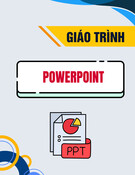
CCNA1 chapter 9
(MẠNH HẠO NHIÊN C10CT9)
----J-----J-------
CCNA 1 - Chapter 9 Exam Answers
Cisco CCNA exploration v 4.0, module 1,
chapter 9 Exam.
Questions and answers 100% correct.
1. What are three functions of the upper data link sublayer in the
OSI model? (Choose three.)
recognizes streams of bits
identifies the network layer protocol
makes the connection with the upper layers
identifies the source and destination applications
insulates network layer protocols from changes in physical equipment
determines the source of a transmission when multiple devices are transmitting
2. What are the two most commonly used media types in
Ethernet networks today? (Choose two.)
coaxial thicknet
copper UTP
coaxial thinnet
optical fiber
shielded twisted pair
3. Ethernet operates at which layer of the
TCP/IP network model?
application
physical
transport
internet
data link
network access
4. Which two features make switches preferable to hubs in
Ethernet-based networks? (Choose two.)
reduction in cross-talk
minimizing of collisions
support for UTP cabling
division into broadcast domains
increase in the throughput of communications

5. Refer to the exhibit. Which option correctly identifies content
that the frame data field may contain?
preamble and stop frame
network layer packet
physical addressing
FCS and SoF
6. Host A has an IP address of 172.16.225.93, a mask of
255.255.248.0, and a default gateway of 172.16.224.1. Host A
needs to send a packet to a new host whose IP is
172.16.231.78. Host A performs the ANDing operation on its
address and subnet mask. What two things will occur?
(Choose two.)
Host A will get a result of 172.16.224.0 from the AND process.
Host A will send on to the media a broadcast frame that contains the packet.
Host A will broadcast an ARP request for the MAC of the host 172.16.231.78.
Host A will change the destination IP of the packet to 172.16.224.1 and forward the
packet.
Host A will encapsulate the packet in a frame with a destination MAC that is the
MAC address associated with 172.16.224.1.
7. What three primary functions does data link layer
encapsulation provide? (Choose three.)
addressing
error detection
frame delimiting
port identification
path determination
IP address resolution
8. What is the primary purpose of ARP?
translate URLs to IP addresses
resolve IPv4 addresses to MAC addresses
provide dynamic IP configuration to network devices
convert internal private addresses to external public addresses
9. When a collision occurs in a network using CSMA/CD, how
do hosts with data to transmit respond after the backoff period
has expired?
The hosts return to a listen-before-transmit mode.
The hosts creating the collision have priority to send data.
The hosts creating the collision retransmit the last 16 frames.
The hosts extend their delay period to allow for rapid transmission.
10. What are the two dynamic methods used to maintain

ARP tables? (Choose two.)
monitor traffic on the local segment
monitor traffic on the local and remote segments
send a Layer 2 broadcast containing an ARP request
send a Layer 3 broadcast containing an ARP request
11. Convert the binary number 10111010 into its hexadecimal
equivalent. Select the correct answer from the list below.
85
90
BA
A1
B3
1C
12.
Refer to the exhibit. What command was executed on a host
computer to produce the results shown?
route PRINT
arp -a
arp -d
netstat
telnet
13. What are the two basic functions of the ARP
protocol? (Choose two.)
resolve known IPv6 addresses to MAC addresses
resolve known MAC to IP addresses
maintain ARP cache in RAM
resolve known IPv4 addresses to MAC addresses
14.
Refer to the exhibit. The switch and workstation are
administratively configured for full-duplex operation. Which
statement accurately reflects the operation of this link?

No collisions will occur on this link.
Only one of the devices can transmit at a time.
The switch will have priority for transmitting data.
The devices will default back to half duplex if excessive collisions occur.
15. Why do hosts on an Ethernet segment that experience a
collision use a random delay before attempting to transmit a
frame?
A random delay is used to ensure a collision-free link.
A random delay value for each device is assigned by the manufacturer.
A standard delay value could not be agreed upon among networking device vendors.
A random delay helps prevent the stations from experiencing another collision during
the transmission.
16. Which statements correctly describe MAC
addresses? (Choose three.)
dynamically assigned
copied into RAM during system startup
layer 3 address
contains a 3 byte OUI
6 bytes long
32 bits long
17. Ethernet operates at which layers of the OSI
model? (Choose two.)
Network layer
Transport layer
Physical layer
Application layer
Session layer
Data-link layer

18.
Refer to the exhibit. Host_A is attempting to contact Server_B.
Which statements correctly describe the addressing Host_A
will generate in the process? (Choose two.)
A packet with the destination IP of Router_B.
A frame with the destination MAC address of Switch_A.
A packet with the destination IP of Router_A.
A frame with the destination MAC address of Router_A.
A packet with the destination IP of Server_B.
A frame with the destination MAC address of Server_B.
19.
In the graphic, Host A has reached 50% completion in sending
a 1 KB Ethernet frame to Host D when Host B wishes to
transmit its own frame to Host C. What must Host B do?
Host B can transmit immediately since it is connected on its own cable segment.
Host B must wait to receive a CSMA transmission from the hub, to signal its turn.
Host B must send a request signal to Host A by transmitting an interframe gap.
Host B must wait until it is certain that Host A has completed sending its frame.
20. After an Ethernet collision, when the backoff algorithm is
invoked, which device has priority to transmit data?
the device involved in the collision with the lowest MAC address
the device involved in the collision with the lowest IP address

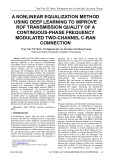
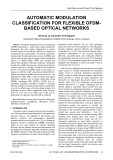


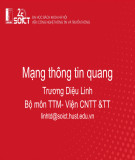
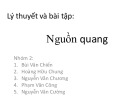

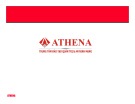
![Bài giảng Cáp mạng, vật tải truyền - GV. Lê Bá Thi [Chuẩn SEO]](https://cdn.tailieu.vn/images/document/thumbnail/2016/20160409/o0tchya0o/135x160/4531460212639.jpg)
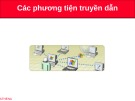







![Đề thi Excel: Tổng hợp [Năm] mới nhất, có đáp án, chuẩn nhất](https://cdn.tailieu.vn/images/document/thumbnail/2025/20251103/21139086@st.hcmuaf.edu.vn/135x160/61461762222060.jpg)

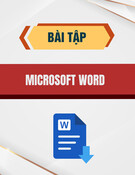
![Bài tập Tin học đại cương [kèm lời giải/ đáp án/ mới nhất]](https://cdn.tailieu.vn/images/document/thumbnail/2025/20251018/pobbniichan@gmail.com/135x160/16651760753844.jpg)
![Bài giảng Nhập môn Tin học và kỹ năng số [Mới nhất]](https://cdn.tailieu.vn/images/document/thumbnail/2025/20251003/thuhangvictory/135x160/33061759734261.jpg)
![Tài liệu ôn tập Lý thuyết và Thực hành môn Tin học [mới nhất/chuẩn nhất]](https://cdn.tailieu.vn/images/document/thumbnail/2025/20251001/kimphuong1001/135x160/49521759302088.jpg)
